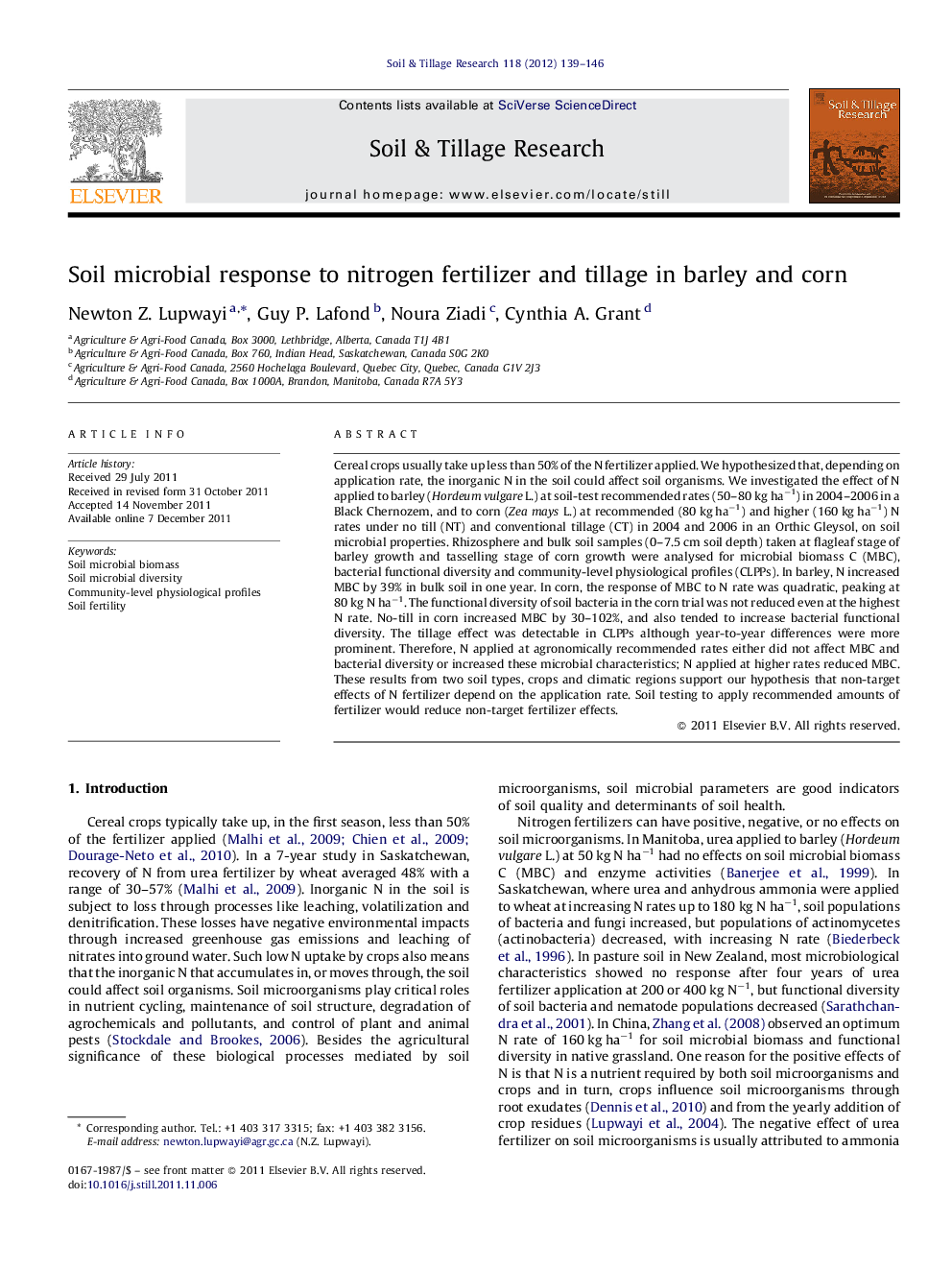| کد مقاله | کد نشریه | سال انتشار | مقاله انگلیسی | نسخه تمام متن |
|---|---|---|---|---|
| 306078 | 513070 | 2012 | 8 صفحه PDF | دانلود رایگان |

Cereal crops usually take up less than 50% of the N fertilizer applied. We hypothesized that, depending on application rate, the inorganic N in the soil could affect soil organisms. We investigated the effect of N applied to barley (Hordeum vulgare L.) at soil-test recommended rates (50–80 kg ha−1) in 2004–2006 in a Black Chernozem, and to corn (Zea mays L.) at recommended (80 kg ha−1) and higher (160 kg ha−1) N rates under no till (NT) and conventional tillage (CT) in 2004 and 2006 in an Orthic Gleysol, on soil microbial properties. Rhizosphere and bulk soil samples (0–7.5 cm soil depth) taken at flagleaf stage of barley growth and tasselling stage of corn growth were analysed for microbial biomass C (MBC), bacterial functional diversity and community-level physiological profiles (CLPPs). In barley, N increased MBC by 39% in bulk soil in one year. In corn, the response of MBC to N rate was quadratic, peaking at 80 kg N ha−1. The functional diversity of soil bacteria in the corn trial was not reduced even at the highest N rate. No-till in corn increased MBC by 30–102%, and also tended to increase bacterial functional diversity. The tillage effect was detectable in CLPPs although year-to-year differences were more prominent. Therefore, N applied at agronomically recommended rates either did not affect MBC and bacterial diversity or increased these microbial characteristics; N applied at higher rates reduced MBC. These results from two soil types, crops and climatic regions support our hypothesis that non-target effects of N fertilizer depend on the application rate. Soil testing to apply recommended amounts of fertilizer would reduce non-target fertilizer effects.
► N applied at recommended rate increased or did not affect soil microbial biomass.
► N applied at recommended rate increased or did not affect soil microbial diversity.
► N applied at higher rates reduced soil microbial biomass but not diversity.
► No-till increased soil microbial biomass by 30–102%.
Journal: Soil and Tillage Research - Volume 118, January 2012, Pages 139–146